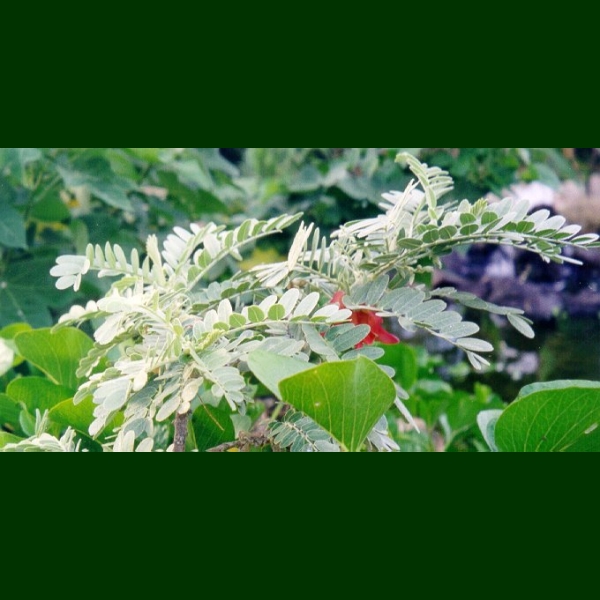 Hawaiian Name(s): ‘ohai
Hawaiian Name(s): ‘ohaiScientific Name: Sesbania tomentosa
Vernacular Name: none
Family: Fabaceae
Status: endemic
Authority: Hook. & Arn.
Description: Low growing, spreading prostrate shrub or small tree to 18 in. tall, silky-wool covered branches & leaves, red-salmon colored flowers 1 in. long, olive green-brown seeds.
Habitat Occurring in coastal/low-elevation dry sites on all main islands and some NWHI (Wagner et al. 1990:704–705).
Medicines:
Non Medicinal Uses: Flowers used in lei (Krauss 1993:77).
Specific gravity of wood: unknown
Famous Locations:
Mele:
`Ōlelo Noeau: [I] Ka wahine hele la o Kaiona, alualu wai li‘ulä o ke kaha pua ‘ohai. The woman, Kaiona, who travels in the sunshine pursuing the mirage of the place where the ‘ohai blossoms grow. Kaiona was a goddess of Ka‘ala and the Wai‘anae Mountains. She was a kind person who helped anyone who lost his way in the mountains by sending a bird, an ‘iwa, to guide the lost one out of the forest. In modern times Princess Bernice Pauahi Bishop was compared to Kaiona in songs. [II] Ke kaha ‘ohai o Kaiona. Kaiona's place where the ‘ohai grows. Kaiona is a benevolent goddess whose home is Mt. Ka‘ala and vicinity. The ‘ohai grew in profusion there, Princess Bernice Pauahi Bishop was compared to this goddess in songs. [III] ‘Ohai o Papiohuli. The ‘ohai of Papiohuli. At Papiohuli, Mana, Kaua‘i, grew ‘ohai trees that bore red or whitish blossoms. These trees grew in profusion in the olden days but are now rare. The blossoms made beautiful lei.
Dye Color and Parts:
Kino lau:
Location on Bishop Museum Kalihi Campus:
Propagation Information: Hawaiian Native Plant Propagation Database.
Native Plants Hawaii.
